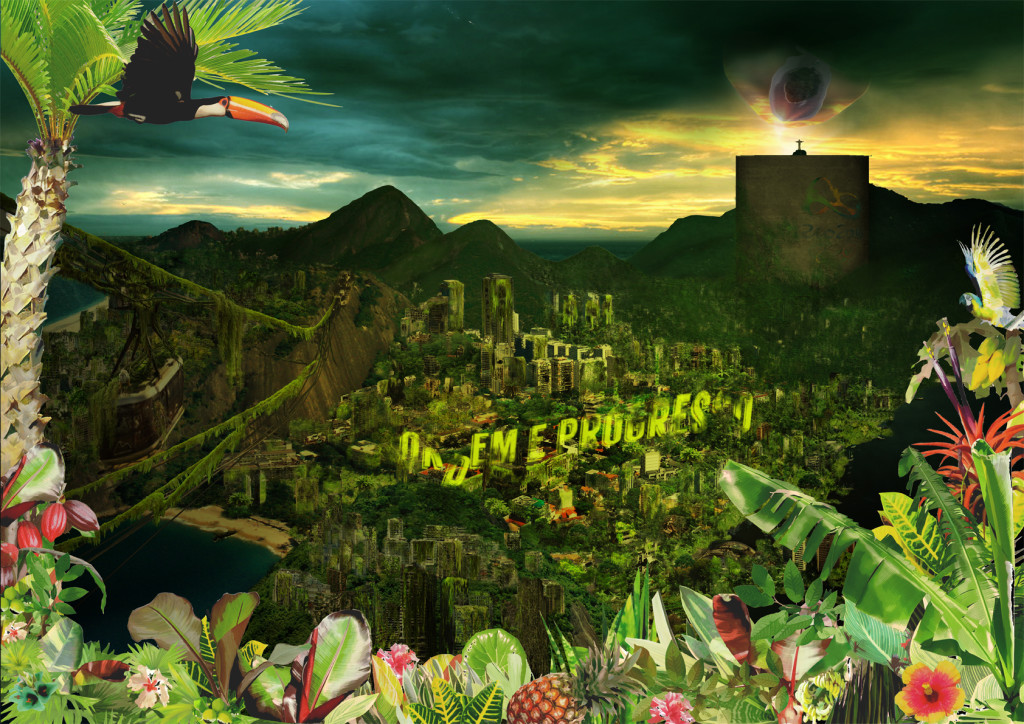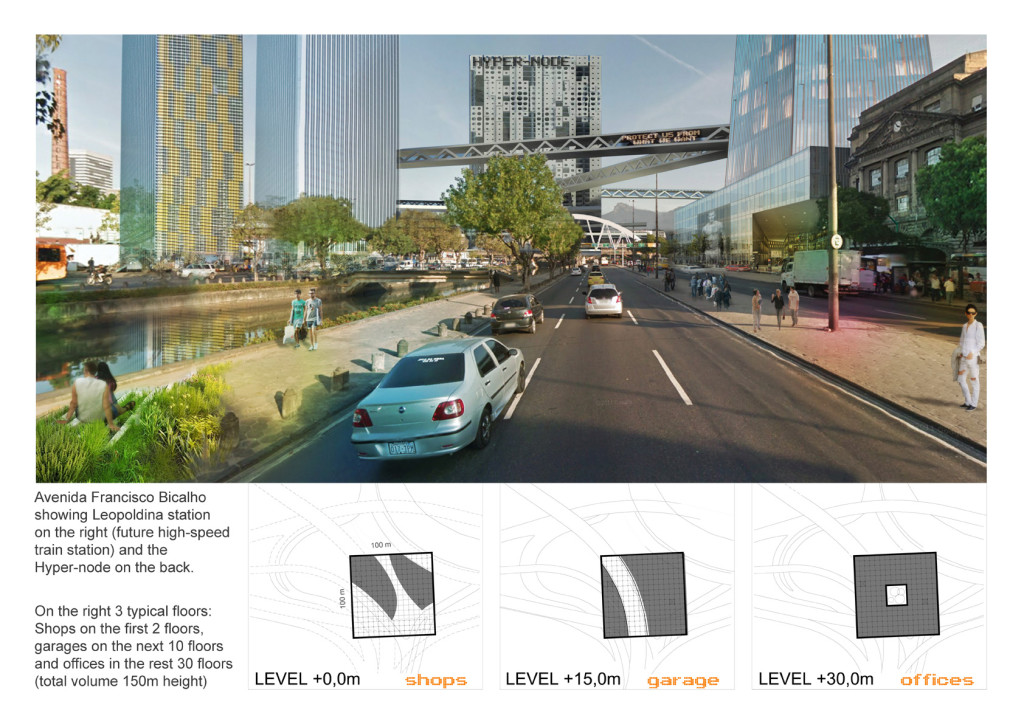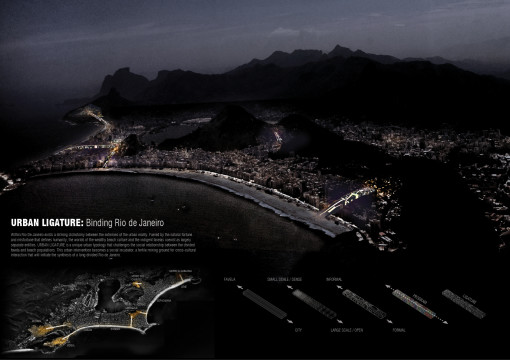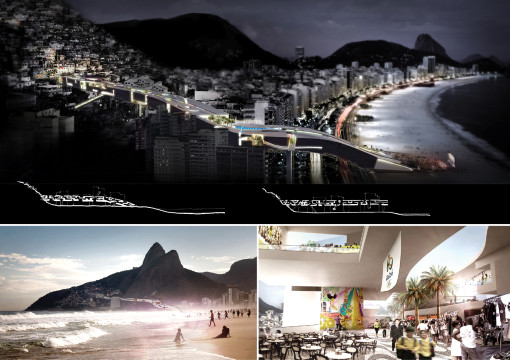Info:
Title: URBAN LIGATURE: Binding Rio De Janeiro - Code: 9a6caContest: Rio de Janeiro / 2013
By: Weston Baker - Eric Suntup
Views: 6136 Likes: 3
Votes:
Alejandro Zaera-Polo 6 Jeffrey Inaba 9 Jeroen Koolhaas 4 Hernan Diaz Alonso 1 Cristiano Toraldo di Francia 8 Pedro Rivera 55.5
URBAN LIGATURE: Binding Rio De Janeiro
Within Rio De Janeiro exists a striking dichotomy between the extremes of the urban reality. Fueled by the natural fortune and misfortune that defines humanity, the worlds of the wealthy beach culture and the indigent favelas coexist as largely separate entities. This divide is perpetuated by Rio’s topography; the luxurious neighborhoods of Copacabana, Ipanema, and Leblon flank the long stretches of beaches at sea level in the South Zone, while the surrounding pockets of favelas ascend up the hills that protrude from the urban fabric. Thus, a world of poverty and disorder looms over the glamour and excess of Rio’s revered districts in an uneasy status quo. Rio de Janeiro sits at a critical juncture; while global ascension and impending sporting showcases will thrust the city into the international spotlight, rising poverty levels threaten Rio’s legitimacy as a progressive society. To truly confront the toxic societal imbalance that pervades, Rio requires a critical intervention that unites the two worlds in a mutually transformative way. URBAN LIGATURE creates a fluid bind between the favelas and beach development that introduces a revolutionary level of access and interaction between the two worlds. Critical entry points within the favelas and beach development are linked through a seamless and unified space that is suspended above the urban fabric in order to maintain the existing communities and enhance connections between them. The form, an adaptation of Brazilian Modernism, is subdivided to create a spatial gradation that responds to the scale and character of the buildings it touches. Where the form engages the favela, interior space has smaller, denser subdivisions, providing spaces for small shops, classrooms, grocery stores, security, and other essential services. When the form engages the larger buildings and terminates at the beach, the spaces become larger cultural institutions, restaurants, performance space, and public open space. Within this gradation are deviations that allow for larger, public spaces near the favelas and smaller spaces near the beach, blending their formal composition. Cuts into the façade correspond to the scale of the spaces within and enhance this gradation, while creating visual and physical interaction between the interior sequence of spaces and the surrounding city. The interior space becomes a hotbed of diverse activity flourishing among displays of public art murals, gardens, and dramatic views to the city and landscape beyond. This unique urban typology challenges the social relationship between the divided favela and beach populations. The ligature becomes a social incubator, a fertile mixing ground for cross-cultural interaction that will initiate the synthesis of a long divided Rio de Janeiro.
Info:
Title: URBAN LIGATURE: Binding Rio De Janeiro
Time: 4 agosto 2013
Category: Rio de Janeiro
Views: 6136 Likes: 3
Tags: -








